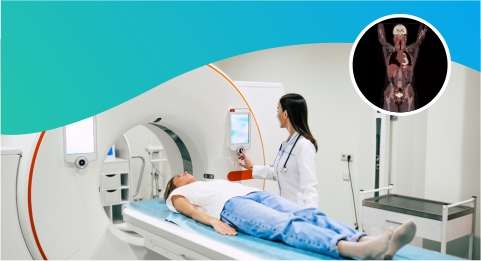
Magnetic resonance imaging (MRI) is a course of action used to analyze and appraise diseases and injuries.
Magnetic resonance imaging (MRI) is a course of action used to analyze and appraise diseases and injuries. Magnetic resonance imaging scans use huge, commanding magnets and a dedicated computer to generate high-resolution pictures cross-sectional images of the bones and pliable tissues. Unlike X-rays and automated tomography (CT) scans, MRI works without emission.
What is Magnetic Resonance Imaging (MRI) used for?
Magnetic resonance imaging (MRI) scans are frequently used to image the non-bony parts or soft tissues of the human body such as the:
- Brain
- Spinal cord and nerves
- Heart and blood vessels
- Internal organs
- Muscles
- Ligaments
- Tendons
- Breasts
- Bones and joints
How do Doctors Perform Magnetic Resonance Imaging (MRI)?
Preceding an MRI exam, patients are asked to eliminate metals and other objects that might influence the magnetic imaging, such as:
- Jewelry
- Eyeglasses
- Watches
- Dentures
- Hearing aids
- Underwire bras
- Cosmetics that contain metal particles
- Wigs
- Hair accessories
During an MRI exam, a patient naturally lies on a counter that slides into the tube-shaped MRI scanner, which is the bore of the magnet, for imaging.
A stimulating current is passed through coiled wires to generate a magnetic field in a patient’s body in the vicinity of the body to be imaged. Radio waves are used to cause the tissues to tremble and generate digital images of the scrutinized area of the body. A processor records the rate at which the body part emits the sensations, and then translates the data into a two-dimensional portrait. During the exam, the patient is capable to converse with a technologist who is in an added room.
In some cases, intravenous (IV) gadolinium-based contrast agents (GBCAs) are used to augment the dissimilarity and feature of the images.
MRIs are not throbbing but they can be fairly loud, with a lot of patter or pounding noises, so earplugs or headsets are habitually used to soften the sound.
An archetypal MRI scan lasts from 20 to 90 minutes, depending on the fraction of the body being imaged.
What are the Risks and Complications of Magnetic Resonance Imaging (MRI)?
There are not many impediments or side effects of magnetic resonance imaging (MRI), on the other hand, there are some deliberations:
- Entrenched devices and foreign bodies
Natives who have pacemakers, vagus nerve stimulators, implantable cardioverter-defibrillators, loop recorders, insulin pumps, cochlear implants, deep brain stimulators, and capsules from pill endoscopy should not get an MRI
- Unstable patients
May not be able to abide by an MRI
- Pregnancy
It is suggested MRI scans be avoided, chiefly in the first trimester
- Gadolinium contrast agent
Patients who entail dialysis may have a brutal reaction to the use of these agents
- Claustrophobic patients
These patients may necessitate sedation or may require having an open MRI
- Agitated patients
Young kids or anyone who is powerless to stay still may require to be knocked out
- Obese or large patients
Patients may be not capable to fit into the canister of the MRI system
These patients may be able be provide accommodation in an open MRI
- Noise
MRI equipment can be very raucous and ear guard may be desirable









